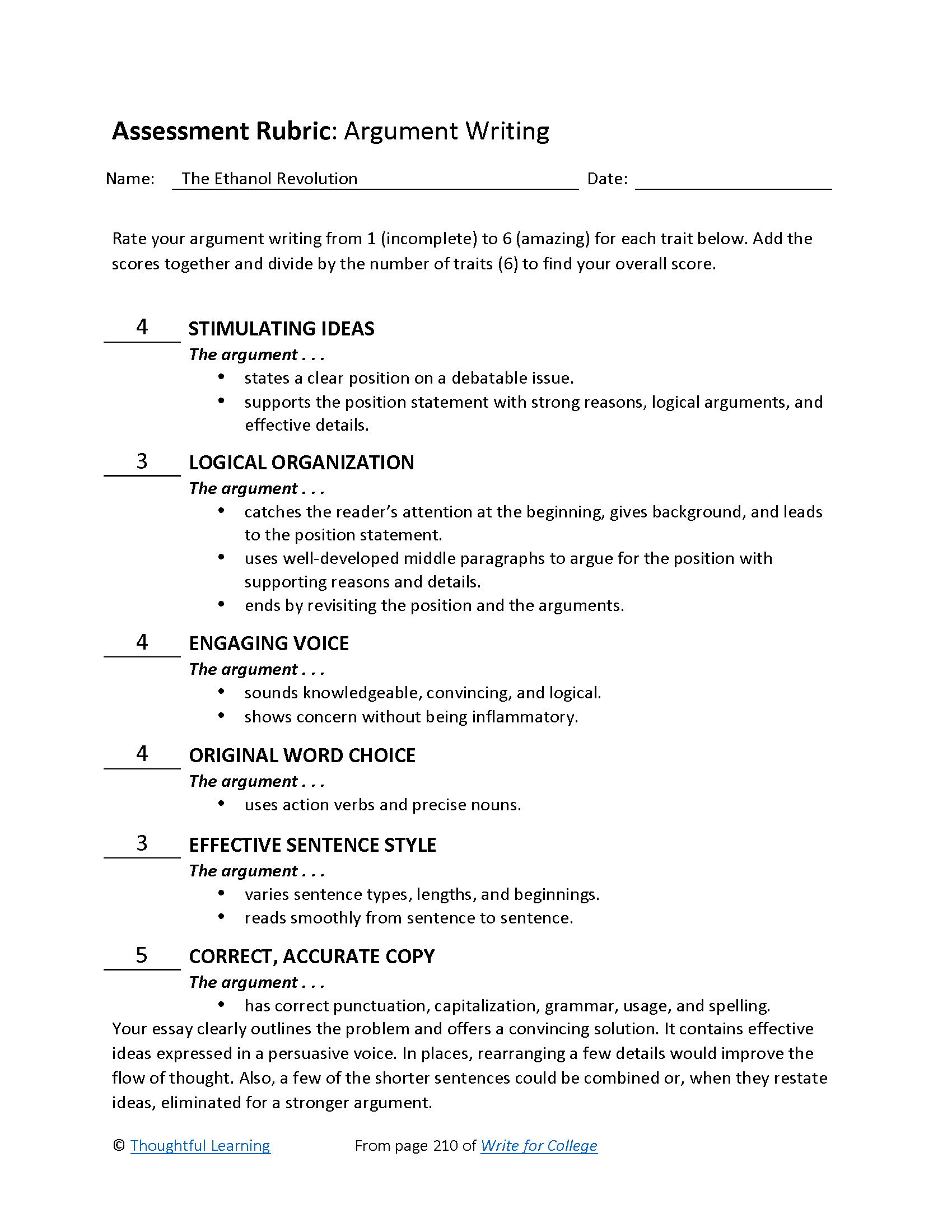Student Model
The Ethanol Revolution
The planet is warming, seas are rising, and ice-caps are melting. With all of these problems plaguing the Earth, it appears that the planet is a lost cause. Despite these troubles, there are ways to save the Earth. The United States has failed to capitalize on the solution that has been sitting in the middle of the country. Ethanol could be produced to take dirty fossil fuels out of the engines of America. Turning agriculture into fuel instead of oil will save the planet from human activity. The easiest way for humanity to save the environment is to switch to ethanol.
Ethanol is the key to reversing the United States’ oil addiction. Ethanol is a clean alternative for energy in cars and factories. Ethyl is an alcohol fuel that comes from plant material. It was first used in 1908 in Henry Ford’s Model T. It was used because it was better for the engine, and required less gasoline for fuel. Ethanol keeps the engine clean, and works better than gasoline. Growthenergy.org writes that, “Ethanol is a clean-burning, high-octane fuel that reduces emissions and helps keep your engine clean. It’s the only practical, renewable fuel available right now, for the car you already have” (3). Today, ethanol is mixed in with gasoline to create E15, a mixture of 85 percent gasoline and 15 percent ethanol. E15 was a mandate created by the government to eliminate some carbon emissions. E15 is still found in gas stations today. However, this caused controversy when food prices started to rise. Many people today believe that ethyl fuel makes food prices go up, but in reality they are not correlated. Ethyl alcohol actually comes from yellow field corn, an inedible type of corn that grows in most farms. Food prices went up from external reasons such as oil companies raising gasoline costs to blame ethanol for the food prices. Overall, when compared to fossil fuels, ethanol is cheaper, cleaner, and actually renewable.
Despite ethanol’s many positives, American’s have a general disdain for it. According to the Department of Energy, only 41 percent of Americans have a positive view on ethanol. This is because many Americans believe in myths spread by large oil companies to hurt ethanol production. Many people believe that the energy balance of ethanol is negative, that is to say that more energy goes into making ethanol than is obtained from ethanol. This statement is completely false. The U.S. Department of Energy states that, “Ethanol has a positive energy balance—that is, the energy content of ethanol is greater than the fossil energy used to produce it—and this balance is constantly improving with new technologies” ("Ethanol Myths and Facts," 3). Using ethanol is the next technological step in creating a green energy. U.S. Ethyl is under appreciated and should replace gasoline as the America’s primary source of fuel.
Currently, ethanol is more obtainable than most green energy for cars. Though cars that are solar or electric don’t produce any carbon dioxide, they aren’t efficient and are quite expensive. Americans can already make the switch to ethanol without buying new and expensive cars. Many people believe that ethanol is harmful to engines or not compatible with their cars. The truth is that most cars can already use straight ethanol. Many cars already have a sign on the back with the words “Flex Fuel.” This means that a car can already take ethanol instead of gasoline for fuel. Most cars without flex fuel badges can still use ethyl. The only reason a car would not be able to take ethyl alcohol is because the car’s creators have built in a program to reject it. Many car companies work with oil companies to make sure ethanol isn’t used. One big oil company working to stamp out ethyl alcohol is Koch Industries. The Koch Brothers released an ad saying “Ethanol nearly doubles greenhouse emissions -Science” (“End Ethanol Mandates”). Though Koch Industries believe they have “science” on their side, the Renewable Fuels Association states that “The 14.3 billion gallons of ethanol produced in 2014, reduced GHG emissions by 39.6 million metric tons-equivalent to removing 8.4 million cars from the road” (“Going Global: Ethanol Industry Outlook” 8). Despite all of the attacks and ads against ethyl, science proves that ethanol is the first step to take down climate change.
While solar and wind energies may be cleaner, it is harder for America to make that change. Ethanol can reduce greenhouse emissions from cars and without huge change in the motor industry. The switch to ethanol could be made today. If America is dedicated to a cleaner society, ethanol is key to making the country run on green energy. Energy is the most important resource of the modern century, and it can be grown here at home. The United States is already the number one producer of ethanol. Changing the ethanol standard from E15 to E85 or E100 could mean the difference in the world. Ethanol is the best way to create cleaner energy in America. While the debate over ethanol continues, the climate will only heat up more. The precious time humanity once had for decision making is gone, the answer must be clear that ethanol is the future of energy.
Note: The works-cited page is not shown.

Rubric


The Ethanol Revolution by Thoughtful Learning is licensed under a Creative Commons Attribution-NonCommercial-ShareAlike 4.0 International License.
Based on a work at k12.thoughtfullearning.com/assessmentmodels/ethanol-revolution.